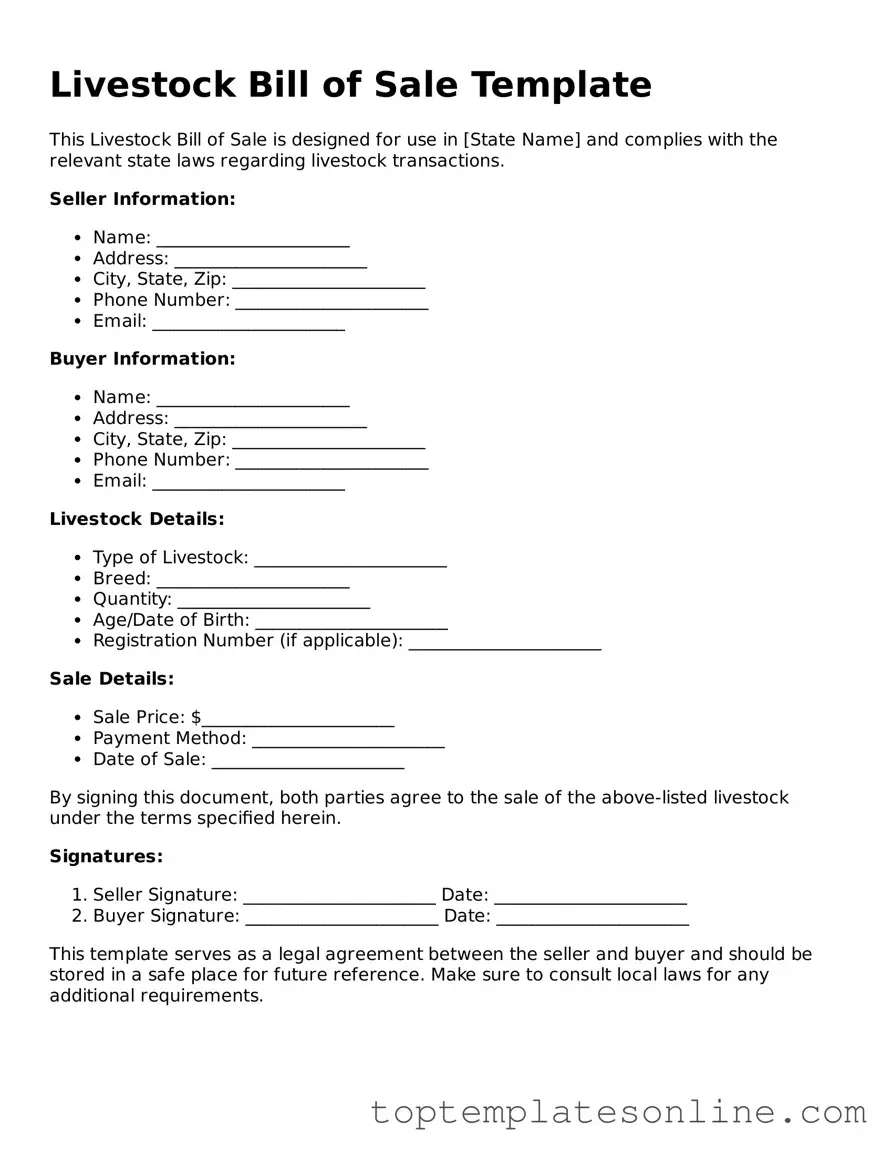Attorney-Approved Livestock Bill of Sale Form
The Livestock Bill of Sale form is a legal document that records the transfer of ownership of livestock from one party to another. This form serves as proof of the transaction and outlines important details such as the description of the animals, the sale price, and the date of transfer. Understanding this form is essential for both buyers and sellers to ensure a smooth and legally binding exchange.
Customize Livestock Bill of Sale Here
